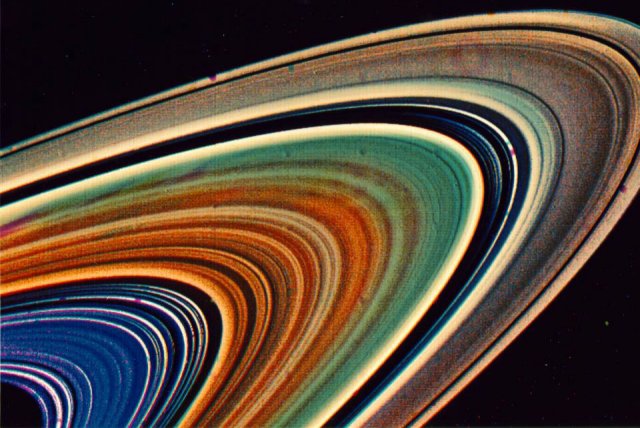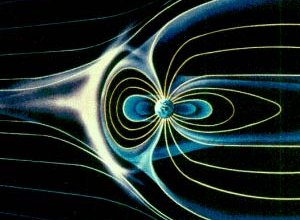
The Rings of EarthVarious space-engineering projects have been proposed that encircle planets and stars. Ringworld, Dyson spheres, etc.However, one pattern which we know is relatively stable is an annular disc. The planet earth looks destined to fill up - and soon there will be a shortage of real estate. Ocean reclamation will be part of the solution - but more drastic measures will eventually also need to be taken. Here, it is proposed that we mine the moon, and create an annular earth-disc - on which to house additional real estate and infrastructure.
The moon is the most convenient source of matter. According to our understanding of the formation of the solar system, the moon condensed from a ring around the earth. It is now in an inert and poorly-accessible blob. The moon would benefit from a shake up. Material could be ejected into lunar orbit with large explosions, and from there deployed into a disc around the earth.
Radiation protectionThe rings would enjoy some of the Earth's radiation protection:
Ring stabilityRing systems are usually in a state of gradual decay. Collisions result in frictional forces, which eventually destroy the ring system.The rings of the Earth would not contain colliding particles. Rather they would be sheperded by satellites - which would intervene to prevent collisions. One of the benefits of a ring system is that relative velocities are kept relatively small - which helps reduce the chances of collision damage. Because of tidal forces from the moon and the sun, the ideal circular orbits (which would be most stable) will not be possible. Instead, semi-elliptical orbits will arise. These will then precess around the planet - resulting in spirograph-like orbital patterns:
 Non-circular orbits Multiple concentric bands of such rings could be employed. Gaps could be left between them. These would help prevent collisions - and allow space for out-of-the-plane satellites. Friction from the solar wind will cause the ring system to gradually decay. It will require constant maintenance to retain its shape. The energy for this could come from the sun, or from a fusion power source. Possibly, solar sailing techniques could be employed.
Moon - or asteroids?An alternative to mining the moon is mining the asteroid belt. However, the asteroid belt is further away - and it has less ice. it will probably prove to be a less attractive resource - except perhaps for some rare elements.
Moon - friend or foe?The moon itself may be unnecessary. It may represent a hazard - by causing tidal stresses to the earth and its rings.Proponents may claim that it increases the earth's vulcanism, and helps keep the earth's core molten, helps drive many ecostystems, and allows us to harvest tidal power. However, it is far from obvious that the overall effect is desirable. The moon also contributes to earthquakes, continental erosion, and adverse weather conditions. Probably we should aim to eventually vaporise the entire moon.
The Rings that were once the EarthMuch the same reasoning that suggests fragmenting the moon, also leads to the idea that the Earth itself might also benefit from being divided up - to allow its material resources to be better utilised. However, it seems possible that the Earth may be preserved for sentimental reasons.
 Saturn's rings - detail
LinksEarth's Artificial Ring: Project West FordSpace Ring Could Shade Earth and Stop Global Warming Would a Saturn-like ring system around planet Earth remain stable? Mining The Moon Mining The Moon - Technology Review Mining The Moon - Popular Science |



